Table of Contents
Scales are a collection of tones and semi tones in an agreed pattern. The scale that we use most in bluegrass (and most other western music is the Major Scale.
Major Scale
The major scale is a set of tones and semi tones in the following sequence;
- Tone
- Tone
- Semi-tone
- Tone
- Tone
- Tone
- Semi-tone
The piano keyboard contains a major scale by design, using just the white notes (as long as we start at the right place !)
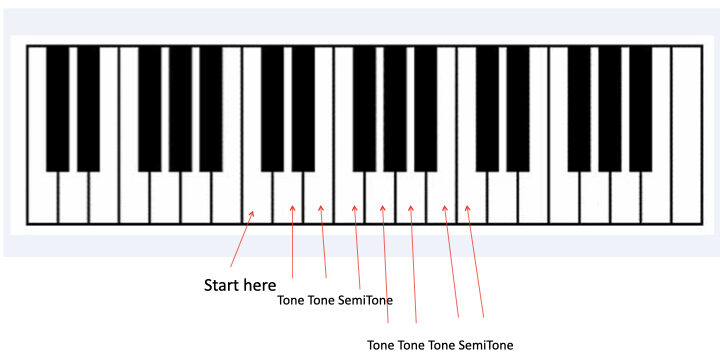
When we play these notes in succession, we get the scale that we all recognise !
Naming the notes
We have seen that a scale is a series of 8 notes with the last note being the higher harmonic version of the starting note. Having established that, we now need some convention of naming these notes, in other words a repeating set of seven identifiers. These have been agreed by convention as the first seven letters of the alphabet – A to G. Each of these notes is represented by a ‘white’ key on the piano.
Note where ‘A’ is and therefore where one of the instances of ‘C’ is – who has heard the term ‘middle C’ ? Using the majorscale series that we identified before we can see that this starts and ends on ‘C’ and uses all the white notes in between. This is the ‘C major ‘scale
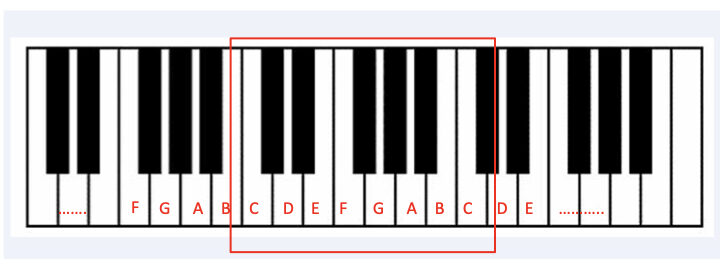
Where are the semi tones ?
Each black key identifies a semi tone between each of the adjacent white keys. Some of the adjacent white notes also identify half tone intervals (i.e. the ones with no black keys between them !)
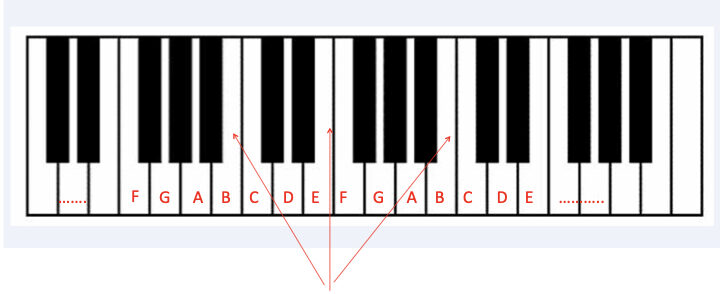
Sharps and Flats
Each of the black keys is one half tone higher than the white key to the left and one half tone lower than the hey to the right. Therefore we use the terms sharp and flat to describe these keys.
The black key to the right of the F is F sharp (written F#), and the black key to the right of the B is B flat (written Bb). Each black key can therefore have two names – a ‘sharp’ name and a ‘flat’ name.
Each black key can therefore have two names – a ‘sharp’ name and a ‘flat’ name. But what about the ‘missing’ black keys? For example there is no key between ‘B’ and ‘C’. The same rules apply – the semitone to the left is ‘flat’ and the semi tone to the right is ‘sharp’. Therefore we have a ‘C flat’ and an ‘E sharp’ if we want them.
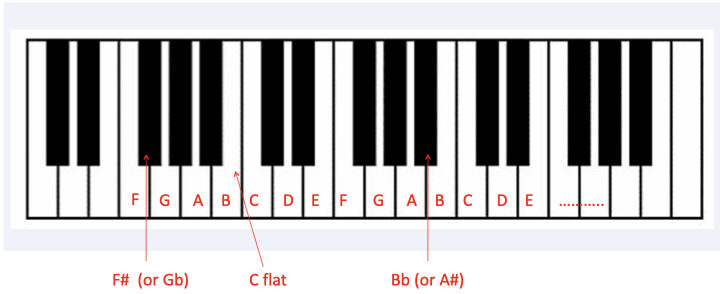
As there are 12 different semi tones before the pattern repeats (e.g. between C and C) there can be 12 different major scales. We don’t normally use all of these in Bluegrass – but there’s no reason why we cant !
G major scale
As an example, lets work out the G major scale. We know it starts on ‘G’ and must follow the ‘Tone Tone Semitone, Tone Tone Tone Semitone’ pattern. The notes must therefore be G, A, B, C, D, E, F# and finally G.
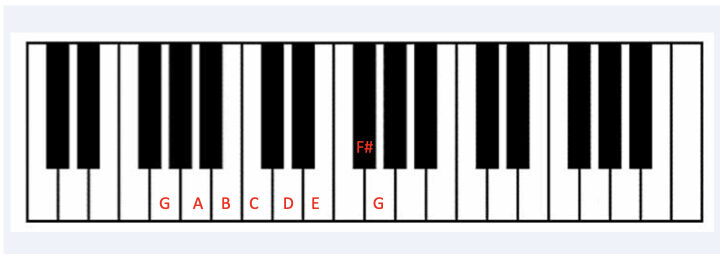
Major scale rules
As explained earlier, we use the letters a to G to name the white notes, repeating that pattern as we move along the keyboard. We can see that the same letter is always in the same place on the keyboard. For example, if we find a group of threee black yes, the white key between the first two is always G. THe next white key is always A, and so on.
In our G major example above, we have a single black key, in order to maintain the Tone – Tone -Semitone – Tone – Tone – Tone – Semitone pattern. We discovered earlier that a black note can have two names – a flat and a sharp name, so this note could be either F# or Gb. So which of these do we use. The answer is that;
A major scale must use each letter once, and once only.
So, because of this rule, the black note in a G major scale must be an F#, as we have already used the G, and if we didnt call it F#, we wouldn’t have used the letter F.
Recap
- A major scale is a succession of notes that follows the pattern Tone-Tone-Semitone-Tone-Tone-Tone-Semitone.
- Each letter from A to G must be used once, and once only.
By following the above rules, you should now be able to work out the notes, and correct naming for any major scale!